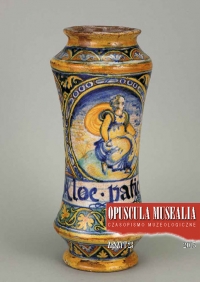Non-destructive in situ examination of a 16th century Spanish panel painting „San Telmo”
Non-destructive in situ examination of a 16th century Spanish panel painting „San Telmo”
Author(s): Anabelle Kriznar, Kilian Laclavetine, Maria V Muñoz, Miguel A. Respaldiza, Mercedes VegaSubject(s): Museology & Heritage Studies, Visual Arts, 15th Century, 16th Century
Published by: Wydawnictwo Uniwersytetu Jagiellońskiego
Keywords: 16th century; panel painting; pigments; preparation; UV; IRR; XRF;
Summary/Abstract: The panel painting San Telmo by an anonymous 16th century Spanish artist is part of the permanent exhibition at the Fine Arts Museum of Seville, one of the most important Spanish galleries. As part of a larger study on 15th and 16th century Spanish painting, the principal interest of this work was to obtain more information the materials applied in its creation. The research work was carried out in situ in the exhibition room; hence, only non-destructive analytical methods were applied. The painting was first studied with UV light to observe later interventions. After this, a possible preparatory drawing was searched for with IR re-flectography (IRR). Finally, a portable X-Ray fluorescence (XRF) equipment was applied for a material analysis. The UV image of the painting clearly revealed later interventions, which helped to select the points for the XRF analysis, to distinguish between original and modern pigments. The XRF analysis showed that the painter’s palette was common for the 16th century, and similar to those found in other panels from the same period in the Museum collection, namely: lead white (identified by Pb), yellow and red ochres (Fe), vermilion (Hg), a copper based green pigment (Cu), azurite (Cu), and an organic black, probably bone black (Ca). Several retouches made on the bases of Zn and Ti whites were confirmed. The presence of Ca and Pb in every analysed point shows that there must be a calcium based preparation, probably gypsum, with a lead based priming. Most interestingly, the IR images revealed not only a very precise and decisive artist’s brushstroke, observed in the modelling of the subject’s head or clothing, but also a change in the shape of the boat that the Saint holds in his left hand (pentimenti).
Journal: Opuscula Musealia
- Issue Year: 2015
- Issue No: 23
- Page Range: 113-120
- Page Count: 8
- Language: English

